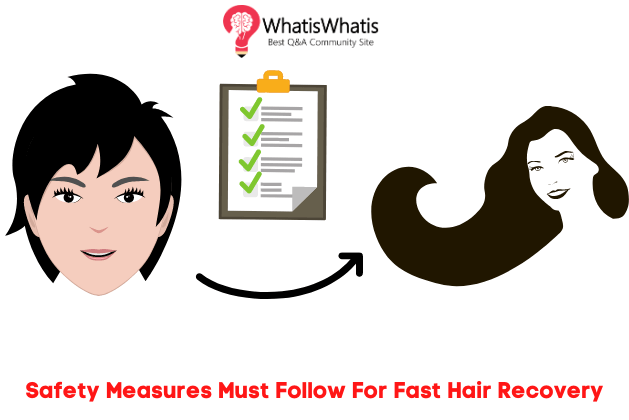No matter who you are or how you want to style your hair, full hair is always desirable. Full, healthy hair allows you to style your hair in any way you like. In this article, we have listed some of the safety measures that you need to follow up on to maintain healthy hair growth after a hair transplant procedure. Read to be enlightened.
Know About Hair Growth Cycle
Many people who contemplate getting a hair transplant surgery or any other type of treatment rush into the process without having proper knowledge of how hair grows. Hair strands are made up of long chains of protein accumulated from various parts of the body. This type of protein is known as keratin. Most of your hair is made of keratin. This protein helps to stimulate hair growth at the cellular level.
On average, healthy hair follicles are supposed to grow up to half-inch every month. This means that it should grow up to 6 inches in a year if you have healthy hair. Certain health conditions or the age factor may end up detailing this steady growth. When we age, our body cells become weaker, leading to the slowing down of growth. That is why you will find older people will have thin hair or balding heads.
What Causes Hair Loss?
Many factors may contribute to hair thinning or hair loss. Some may lead to full hair loss, while others may cause partial hair loss. Let’s look at some of these factors as they will allow us to know what we need to do to stop further hair loss.
Genes
Baldness may come as a result of genetics. If your family has a history of balding or hair loss, there is a high chance that you will also suffer from the same hair loss condition.
UV rays
Ultraviolet rays from the sun are not only harmful to your skin, but your hair too. UV rays cause hair to break because they dry or damaged hair strands.
Medical Conditions & Hormonal Changes
Other factors that may lead to hair thinning include hormone-related conditions such as menopause and pregnancy. These factors may affect hair growth patterns or slow down hair growth. Depending on the condition, the effects may be permanent or temporal.
Hairstyles & Treatments
Hair breakage is also attributed to tying of hair regularly. Besides that, heat styling products can also lead to hair loss. Inflammation comes about when you decide to use hot oil hair treatment products, leading to hair thinning.
Medication
Medications used to manage chronic diseases such as arthritis, depression, or high blood pressure, may also cause hair to fall out.
If you have just a hair restoration procedure such as a hair transplant, here are some of the things that you need to do:
Maintaining a Proper Diet for Hair Growth
Since hair follicles are responsible for hair growth, you can start by reviving damaged hair follicles. A significant amount of energy is required by your body to make hair grow much quicker. Certain foods help to enhance hair growth. When you include these types of food in your diet, you can kiss hair loss goodbye!
Omega-3 Fatty Acids
Women who consumed foodstuff that is rich in omega-3 and 6 fatty acids reduced hair loss effects, based on studies conducted.
Zinc
Lack of zinc in your food may cause hair loss; that is why you need to add it to your everyday diet. Zinc is also found in food supplements which may help to maintain steady and healthy hair growth.
Vitamin C
Vitamin C is usually found in citrus fruits, which help protect your hair from experiencing hair loss. Vitamin C contains antioxidant properties that fight free radicals in the body, promoting thick hair growth. Molecules that damage DNA and cause hair loss are called free radicals.
Iron
If you don’t consume food that contains iron regularly, you may end up losing your hair. You need to include foods that are rich in iron if you want to maintain healthy hair growth.
Vitamin D
According to studies done, most of the people who suffer from alopecia don’t consume foods rich in vitamin D. This is according to studies done. Alopecia is the main culprit behind balding. Vitamin D is also known to create small hair follicles in your body.
See more: Is hair loss Due To Vitamin D Deficiency Reversible?
Types of Hair Loss Treatments
Persons suffering from hair loss have several options to treat their hair loss conditions. Below are some of these options:
Hair Transplant Procedure
One of the most effective hair treatment techniques is called the hair transplant procedure. This hair restoration procedure works by removing healthy hair follicles from the donor area using either the FUT or FUE hair transplant approaches. The harvested hair grafts are then transferred into the balding areas – the recipient site.
Stem Cell Hair Growth
Another treatment that is used to address hair loss is called stem cells hair regrowth. Usually used to treat male and female pattern baldness, this type of hair restoration works by repairing broken or damaged tissues in the body. This procedure entails using stem cells to promote hair growth by dividing and replacing damaged tissues.
Read more: How To Stop hair loss Problem Permanently?
A small skin sample is used in this type of treatment to grow hair follicles. The doctor performing this procedure will replicate these hair follicles in the lab and later transfer them to the scalp area that suffers from hair loss.
Conclusion
Compared to other types of hair loss treatments, hair transplant has the highest success rate. The reason being that healthy hair strands from the back head replace dormant hair follicles, and the results are permanent and more natural. Before deciding which hair transplant approach to go for, ensure that you have first talked to your physician about their effects and eligibility.






Leave a comment